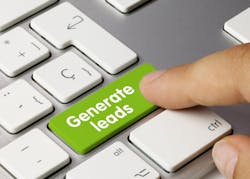How To Know If You Are Ready For A Lead Gen Partner
Most home improvement companies generate leads in a variety of ways including pay-per-click, social media campaigns, and direct mail. Some even work with dedicated lead generation partners to ramp up lead volume quickly. Whether you handle lead gen in-house or outsource it, you need a strategy to maximize ROI and expand your customer base.
Use this five-part checklist to determine if a lead generation partner is right for your business.
1. Do you want to reach homeowners not familiar with your brand?
Remodelers who aim to grow beyond their existing channels need new lead sources. While referrals are a great way to start, they have their limitations. There are only so many people who will find you through Facebook, Google search, or your website. That’s why some remodelers turn to lead generation partners to ramp up lead volume. Lead gen companies specialize in gathering homeowner inquiries from a wide variety of online sources, routing them by email or directly into a remodeler’s CRM on a cost-per-lead basis. When a remodeler sets up such a system, you can scale up lead volume as much as you want.
2. Are you expanding into a new territory or trade?
Two specific growth strategies – geographic expansion or adding a new trade - are great reasons to use a lead generation partner. These growth strategies rely on proven business processes, staff, and brand, but may face uncertainties in unfamiliar markets where customers have different expectations, use different terms, and shop through different channels. In these cases, a lead aggregator can provide insights based on larger data sets of both the existing and desired expansion targets. With this information, you can modify or create campaigns that work specifically for your new customer set.
3. Can your current systems and staff accommodate the increase in leads?
Do not add a lead aggregation partner if your systems are not ready to quickly respond to dozens or hundreds of incremental leads. From a technology perspective, a customer relationship management system (CRM) should be in place. The CRM automatically routes each lead to the relevant staff member and can connect to an auto-dialer to decrease response time. Use a CRM to track appointments, follow-ups, proposals, and contracts so you can see which lead sources are the most cost-effective or where adjustments need to be made. From a personnel perspective, dedicated appointment setters are required to quickly contact new leads. If you do not have such systems in place, it will be difficult to see a return on your investment.
4. Are you prepared for the initial adjustment period?
Adding any new lead generation channel to your mix will require some adjustments. The pace of lead delivery may be quicker, and you might have less context on where the prospect was browsing when they filled out their lead form. When a remodeler first starts working with a lead gen partner, there is often a period where there’s learning from mistakes. The scripts and cadences that worked responding to leads from social sites or branded search might need to be adjusted. The language used by your contact center might need to be tweaked. You are going to increase speed-to-lead. Be patient and you’ll be rewarded with a profitable lead generation program over the long haul.
5. Do you have metrics to measure the success of your campaigns?
It is important to have clear success criteria in mind. Define how you will measure success, whether it is through cost per lead, cost per appointment, or cost per closed sale. However, keep in mind that success in one metric may not necessarily translate to success in another. Communicate your desired criteria to your lead generation partner to ensure you are on the same page.

